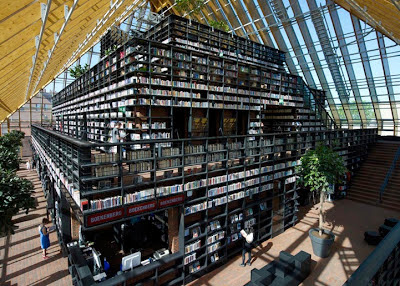So, today I leave
my current job at Boost New Media and start my new job as
Director of the Dowse art museum. And while I feel like Christmas has fallen out of the sky and landed on me, I’m still torn about leaving my team and some of our projects behind. It’s been two and a half of the proudest and happiest years of my life, and I’ve been so well cared for.
I’ve been musing about leaving ever since I started thinking about applying. And the more I’ve thought about it, the more I’ve realised that what I will miss most is being surrounded all day by people speaking a foreign language.
About two metres away from where I sat in the office are two pods of developers. And while I typed and talked and talked and typed and occasionally drew pictures with straight lines and grey boxes and blue text, I would overhear them murmur and sigh and laugh. Words – strange, marvelous words that ranged between the familiar and the incomprehensible – flowed between them, rose off them like mist and floated over to me. And I would pluck them out of the air and savour them.
When the stars aligned, I got to be part of project teams. This was when the language was at its best. I would go to stand-ups and sprint planning meetings, and delight in the words that tumbled from the devs’ mouths and flew about the room:
filter factories, curl command, Monin, Munit, Pingdom, bootstrap …
I have come to picture these words in all sorts of ways. Sometimes they are rocks in a river that I balance on, jumping from one to another as a rush of information flows around me. Sometimes they are balls flying over my head, passed between the tall kids, which occasionally I get my fingertips on. Sometimes I think of them as small river pebbles, these well-worn objects that feel familiar until I pick them up, turn them in my hand, and realise they are little mysteries. There is a rhythm and pleasure to being surrounded by this talk that reminds me so strongly of being a gumbooted, Swandri-ed child, dreamily listening to farmers talk at the sales yards, swapping grazing numbers and eczema spore counts and milk solid prices.
I have also come to think of the words as seasons. The words come and go, in waves – every three months or so, one set seems to be replaced by another. Just when I was becoming fond of a word and would wait in meetings, ears pricked for someone to use it, ready for that little shimmer of recognition, it would leave us, and a new word take its place.
As I prepared to leave, I started collecting words – jotting them down, ticketing them away, eavesdropping on the online chat, pocketing post-it notes off the board when they were no longer needed. When I sat down to assemble them, I realised I had collected an alphabet:
A
Airbrake
Apache
ARCHIVA
B
Big Tuna
Bootstrap
C
Chef
Class
Controllers
Cucumber
Curl commands
D
Deploy
E
Execute
F
Filter factory
Flag
G
Gitosis
GlusterFS
Graceful failure
H
Handshake
HAProxy
Heroku
I
Instances
J
jQuery
K
Keepalive
L
Libraries
M
MongoDB
Monit
Munin
MySQL
N
New Relic
NoSQL (
the saddest acronym in the world)
O
Object identifier
P
Parameters
Pingdom
Puppet
Q
Query
R
Rake task
Refactor
RESTful
RSpec
S
Sass
Solr
Squid
SSH
Stack (The)
T
Tarball
Thumbnailer
U
Unobtrusive JavaScript
V
Variables
W
Webistrano
X
XML
Y
YAML
Z
Zip
Of course, there will be words in my new place. Mostly words that I know, some words that I’ll learn – words that I’ll love and words that I’ll employ because they’re useful, if not elegant or enjoyable. But they’re words from a world I already know. These strange and wonderful words that I’ve been living with, from a strange and wonderful world that I’ve been lucky enough to have shared with me … I will miss the sensation of occasionally grokking the great unknown.
There are five words in particular though that I will take away with me. They are written on a post-it note and live on one of my dev’s (only, not my dev now) machine. And they say this.
These are the words I take with me.


















